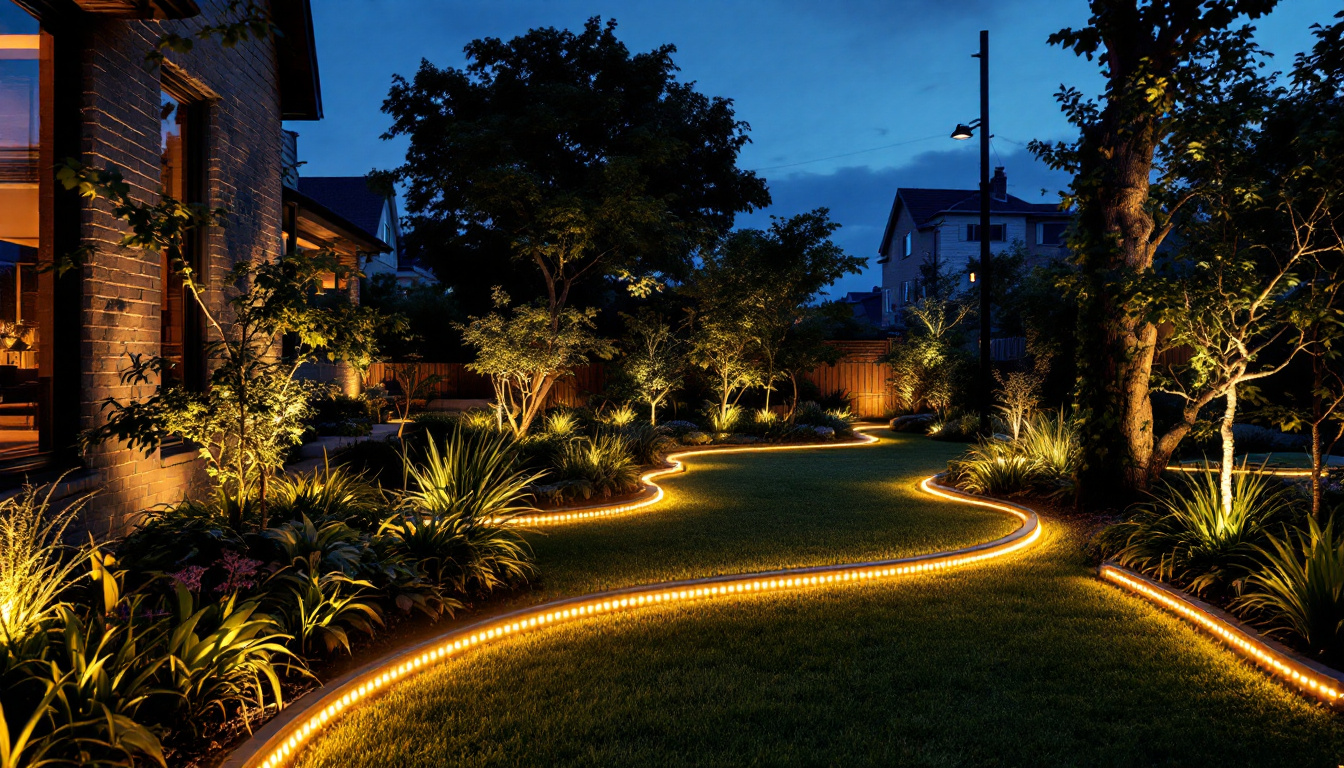
In the ever-evolving world of lighting design, seagull lighting has emerged as a popular choice among contractors and homeowners alike. Known for its unique aesthetic and functional versatility, seagull lighting can enhance both indoor and outdoor spaces. However, as with any lighting solution, there are specific best practices that contractors should follow to ensure successful installations. This article will explore the do’s and don’ts of working with seagull lighting, providing valuable insights for lighting contractors.
Before diving into the specifics of installation and design, it’s crucial for lighting contractors to grasp the fundamental aspects of seagull lighting. This type of lighting typically features a design that mimics the graceful form of seagulls in flight, often incorporating multiple light fixtures on a single mounting arm. Understanding the characteristics of seagull lighting will enable contractors to make informed decisions during the installation process. The unique design not only serves a functional purpose by illuminating spaces effectively but also adds an artistic element that enhances the overall ambiance of the area.
Seagull lighting is renowned for its versatility. It can be used in various settings, from residential homes to commercial spaces. The design can complement both traditional and contemporary aesthetics, making it a preferred choice for many clients. Contractors should familiarize themselves with the different styles and finishes available to offer tailored solutions that meet their clients’ preferences. For instance, a brushed nickel finish might suit a modern kitchen, while an oil-rubbed bronze option could enhance the charm of a rustic dining area. Additionally, the adjustable arms of seagull fixtures allow for customization in light direction, enabling homeowners to create the perfect ambiance for any occasion.
Another important aspect to consider is energy efficiency. Many seagull lighting fixtures are now available with LED options, which not only reduce energy consumption but also have a longer lifespan compared to traditional bulbs. Contractors should be aware of these options and recommend them to clients looking to minimize their environmental impact while also reducing energy costs. Furthermore, the integration of smart technology in modern seagull lighting systems allows for enhanced control over lighting settings. Clients can adjust brightness levels or even set schedules via mobile apps, making it easier to manage energy use while ensuring that spaces are always beautifully illuminated.
Moreover, the shift toward sustainable lighting solutions has led to innovations in the materials used for seagull fixtures. Many manufacturers are now focusing on eco-friendly materials that not only look great but also contribute to a reduced carbon footprint. This trend aligns with the growing consumer demand for sustainable products, making it essential for contractors to stay informed about the latest developments in seagull lighting. By offering energy-efficient and environmentally friendly options, contractors can position themselves as forward-thinking professionals who prioritize both aesthetics and sustainability in their lighting designs.
When working with seagull lighting, there are several best practices that contractors should adopt. These do’s will help ensure that installations are successful and that clients are satisfied with the results.
Before installation, it is essential to assess the space where the seagull lighting will be placed. Consider factors such as ceiling height, room size, and existing décor. A thorough assessment will help determine the appropriate fixture size and placement, ensuring that the lighting serves its intended purpose effectively.
Additionally, take note of any architectural features that may influence the lighting design. For example, if the space has high ceilings, larger fixtures may be necessary to create a balanced look. Conversely, in smaller rooms, more compact fixtures may be appropriate to avoid overwhelming the space. Evaluating the natural light sources in the room is also crucial; understanding how sunlight interacts with the space throughout the day can help in selecting fixtures that complement or enhance the existing light, creating a harmonious environment.
Functionality is a key consideration when selecting seagull lighting. Different areas of a home or business may require varying levels of illumination. For instance, a kitchen may benefit from brighter, focused lighting, while a living room might require softer, ambient lighting for a cozy atmosphere.
Contractors should engage with clients to understand their specific needs and preferences. This dialogue will aid in selecting the right fixtures and bulb types, ensuring that the lighting not only looks good but also meets the practical requirements of the space. It’s also beneficial to consider the potential for dimmable options or smart lighting systems that allow clients to adjust the ambiance based on the time of day or occasion, enhancing the versatility and usability of the lighting design.
Proper installation is critical for the performance and longevity of seagull lighting fixtures. Contractors should always adhere to the manufacturer’s installation guidelines, which often include specific instructions regarding wiring, mounting, and bulb types. Failure to follow these guidelines can lead to safety hazards and potential damage to the fixtures.
Additionally, ensuring that all electrical connections are secure and compliant with local building codes is essential. This diligence not only protects the integrity of the installation but also safeguards clients from potential electrical issues in the future. Moreover, it is wise to conduct a thorough inspection post-installation to verify that all fixtures are functioning as intended. This proactive approach can help identify any issues early on, allowing for timely adjustments and ensuring client satisfaction with the final outcome.
While there are many best practices to follow, there are also common pitfalls that contractors should avoid. These don’ts can help prevent mistakes that could lead to dissatisfaction or safety concerns.
One of the most significant mistakes contractors can make is overlooking the placement of seagull lighting fixtures. Proper placement is crucial to achieving the desired lighting effect. Fixtures that are too high or too low can create shadows or fail to provide adequate illumination.
Contractors should take the time to visualize how the lighting will interact with the space. Using temporary markers or mock-ups can help clients see how different placements affect the overall ambiance before making a final decision. Additionally, considering the function of each area is essential; for example, task lighting in workspaces should be brighter and more focused, while ambient lighting in relaxation areas should be softer and more diffused to create a comfortable atmosphere.
client preferences should always be at the forefront of any lighting project. Contractors who dismiss or overlook a client’s vision risk dissatisfaction and potential conflicts. Engaging clients in the design process fosters collaboration and ensures that the final installation aligns with their expectations.
It is also important to educate clients about the various options available, including different styles, finishes, and bulb types. Providing this information empowers clients to make informed decisions that reflect their personal tastes and requirements. Furthermore, understanding the client’s lifestyle can greatly influence lighting choices; for instance, families with young children may prioritize safety and durability, while those who entertain frequently might focus on creating a warm and inviting atmosphere for guests.
When it comes to lighting fixtures, quality matters. Contractors should avoid the temptation to cut costs by opting for low-quality seagull lighting fixtures. While these may seem like a budget-friendly option, they often result in poor performance, frequent replacements, and ultimately, dissatisfied clients.
Investing in high-quality fixtures not only enhances the aesthetic appeal of a space but also ensures reliability and longevity. Clients will appreciate the value of durable, well-crafted products that stand the test of time. Moreover, high-quality lighting can also improve energy efficiency, leading to lower utility bills and a reduced carbon footprint. Contractors should also consider the long-term benefits of warranty and customer support that often accompany premium products, providing peace of mind for both themselves and their clients.
Once the seagull lighting fixtures are installed, maintenance becomes a key consideration. Educating clients on proper care and maintenance will help prolong the life of the fixtures and maintain their appearance.
Dust and grime can accumulate on lighting fixtures, diminishing their brightness and overall aesthetic. Contractors should advise clients to clean their seagull lighting fixtures regularly. A simple dusting with a soft cloth can help maintain their shine and functionality.
For more thorough cleaning, clients should be instructed to turn off the power and use a damp cloth with mild soap. Avoiding harsh chemicals is essential, as these can damage the finish of the fixtures.
Clients should also be informed about the importance of periodic bulb replacement. Even energy-efficient LED bulbs have a finite lifespan and can dim over time. Contractors can provide guidance on how often bulbs should be replaced and recommend keeping spare bulbs on hand for convenience.
Additionally, educating clients about the signs of a failing bulb, such as flickering or dimming, will help them address issues promptly, ensuring that their lighting remains effective and appealing.
Seagull lighting presents a unique opportunity for lighting contractors to enhance spaces with stylish and functional designs. By adhering to the do’s and don’ts outlined in this article, contractors can ensure successful installations that meet client needs while avoiding common pitfalls.
Understanding the nuances of seagull lighting, from design versatility to energy efficiency, will empower contractors to make informed decisions that benefit both their clients and their businesses. By prioritizing quality, functionality, and client engagement, contractors can elevate their projects and create lasting relationships with satisfied customers.
In the competitive landscape of lighting design, staying informed and adhering to best practices will set contractors apart, ensuring that they not only meet but exceed client expectations in every project.
Ready to elevate your lighting installations with the premium quality and affordability of LumenWholesale? Our extensive selection of spec-grade lighting products is designed to meet the highest industry standards, ensuring you deliver reliable, high-performance lighting for every project. With unbeatable wholesale prices and the convenience of free shipping on bulk orders, you can provide your clients with the best value without hidden fees or compromises. Don’t let middleman markups dim your business potential. Choose LumenWholesale for a seamless blend of quality, affordability, and hassle-free service. Start transforming your lighting projects today by visiting Wholesale Lighting at the Best Value.

Discover the crucial warehouse fixtures that lighting contractors frequently miss.

Discover essential strategies and expert advice for lighting contractors in “Light For Flag.” This article delves into innovative techniques, industry trends, and practical tips to enhance your projects and boost client satisfaction.

Discover the essentials of LED light strips powered by solar energy in this comprehensive guide tailored for lighting contractors.

Discover how LED kitchen lighting fixtures can transform your contracting business.